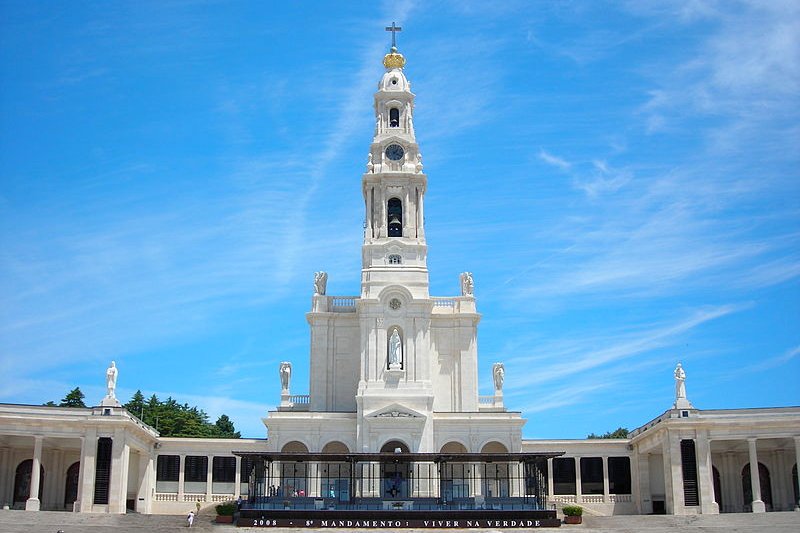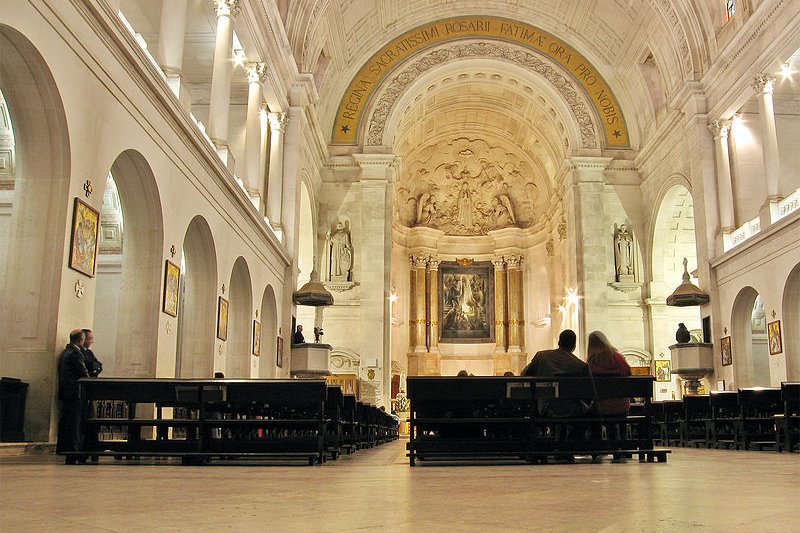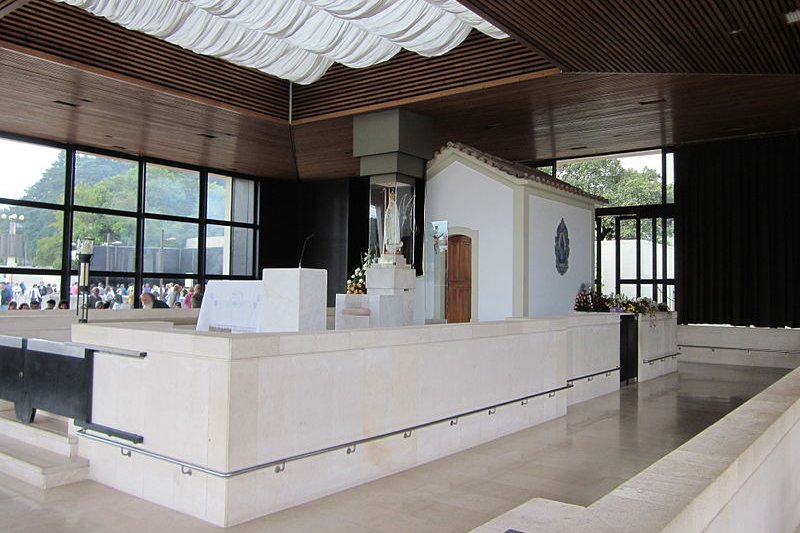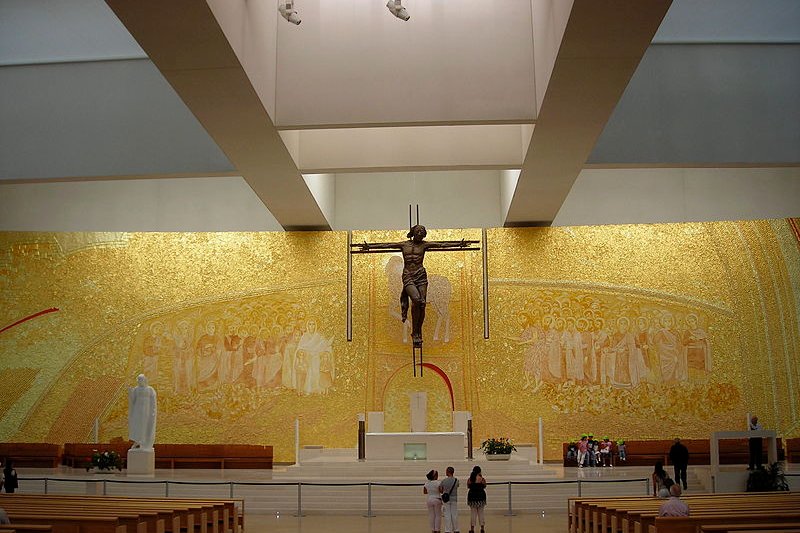
Basilica de Fátima, Portugal
Source: https://commons.wikimedia.org/wiki/File:Santu%C3%A1rio_de_F%C3%A1tima_%283%29_-_Jul_2008.jpg
Author: Therese

Fátima is a small town in Santarém District, Portugal, that is famous as a Catholic pilgrimage site. The town traces its history back to the 12th century. It was named after a Moorish princess who converted to Catholicism following her capture by Christian forces.
The town of Fátima was made famous by the Marian apparitions. In 1917, three shepherd children saw visions of the Virgin Mary. The visions were called Our Lady of Fátima, after the town where it took place.
The first vision occured on 13 May, 1917, and following that, it continued to reappear to the three children, Lúcia Santos and her cousins Jacinta and Francisco Marto, for six consecutive months.

Basilica de Fátima interior
Source: https://commons.wikimedia.org/wiki/File:Fatima_church.jpg
Author: Andreas Trepte

The apparitions at Fátima was declared as "worthy of belief" by the Catholic Church and was supported by five popes, namely Pope Pius XII, Pope John XXIII, Pope Paul VI, Pope John Paul II and Pope Benedict XVI. Pope John Paul II in particular credited the apparition for saving his life in the assassination attempt of May, 1981. In thanksgiving, he offered the bullet that wounded him to the Sanctuary of Our Lady of Fátima.
Of the three children who bore witness of the apparitions of Our Lady of Fátima, Lúcia Santos went on to become a nun. In 1925, while she was a postulant in the convent in Spain, now called Sister Lúcia, she reported seeing another series of apparitions of the Virgin Mary which came to be known as the Pontevedra apparitions.

Capela das Aparições, Fátima
Source: https://commons.wikimedia.org/wiki/File:Capela_das_Apari%C3%A7%C3%B5es_%28F%C3%A1tima%29_001.jpg
Author: Petr Adam Dohnálek

The attention generated by the visions of Our Lady of Fátima has turned the town into a Catholic pilgrimage site. Indeed the economy of Fátima today centers on religious tourism. Lining the streets of the town are shops selling religious articles. Hotels, hostels and restaurants have also been opened to cater to the steady stream of pilgrims.
The focal point of the pilgrims is the Shrine of Our Lady of Fátima, the sprawling religious complex that includes the basilica, the church and the chapel, among others. Every days, hundreds, even thousands of pilgrims approach the shrine on their knees. They lit thousands of candles on the esplanade, and offered wax limbs as thanksgiving for healings received.

Interior of the Church of Santíssima Trindade Fátima
Source: https://commons.wikimedia.org/wiki/File:Santu%C3%A1rio_de_F%C3%A1tima_%2845%29_-_Jul_2008.jpg
Author: Therese

Visiting Fátima
You can take buses from Lisbon to Fátima. The fare is about €19 for the one-and-a-half-hour journey.Sights & Attractions in Fátima
- Basilica de Fátima
Officially known as Basilica of Nossa Senhora do Rosário, this basilica was built in 1928 of limestone in the Neo-Baroque style that is the destination of pilgrims to the town, set before an esplanade that is twice the size of St Peter's Square of Rome. The basilica contains the tombs of Lúcia, Jacinta and Francisco, the three shepherd childrens who saw the visions of Our Lady of Fátima. - Capela das Aparições
Chapel marking the very spot where the apparitions appeared to the children, now on the square itself. - Casa dos Pastorinhos
The farmhouses where the children lived, not preserved. - Church of the Santíssima Trindade
A Roman Catholic church across the esplanade from the Basilica. It was completed in 2007 at the cost of €80 million, and consecrated by Cardinal Tarcisio Bertone on 12 October of that year.
Other Catholic Pilgrimage Sites
 Latest updates on Penang Travel Tips
Latest updates on Penang Travel Tips

Copyright © 2003-2025 Timothy Tye. All Rights Reserved.

 Go Back
Go Back